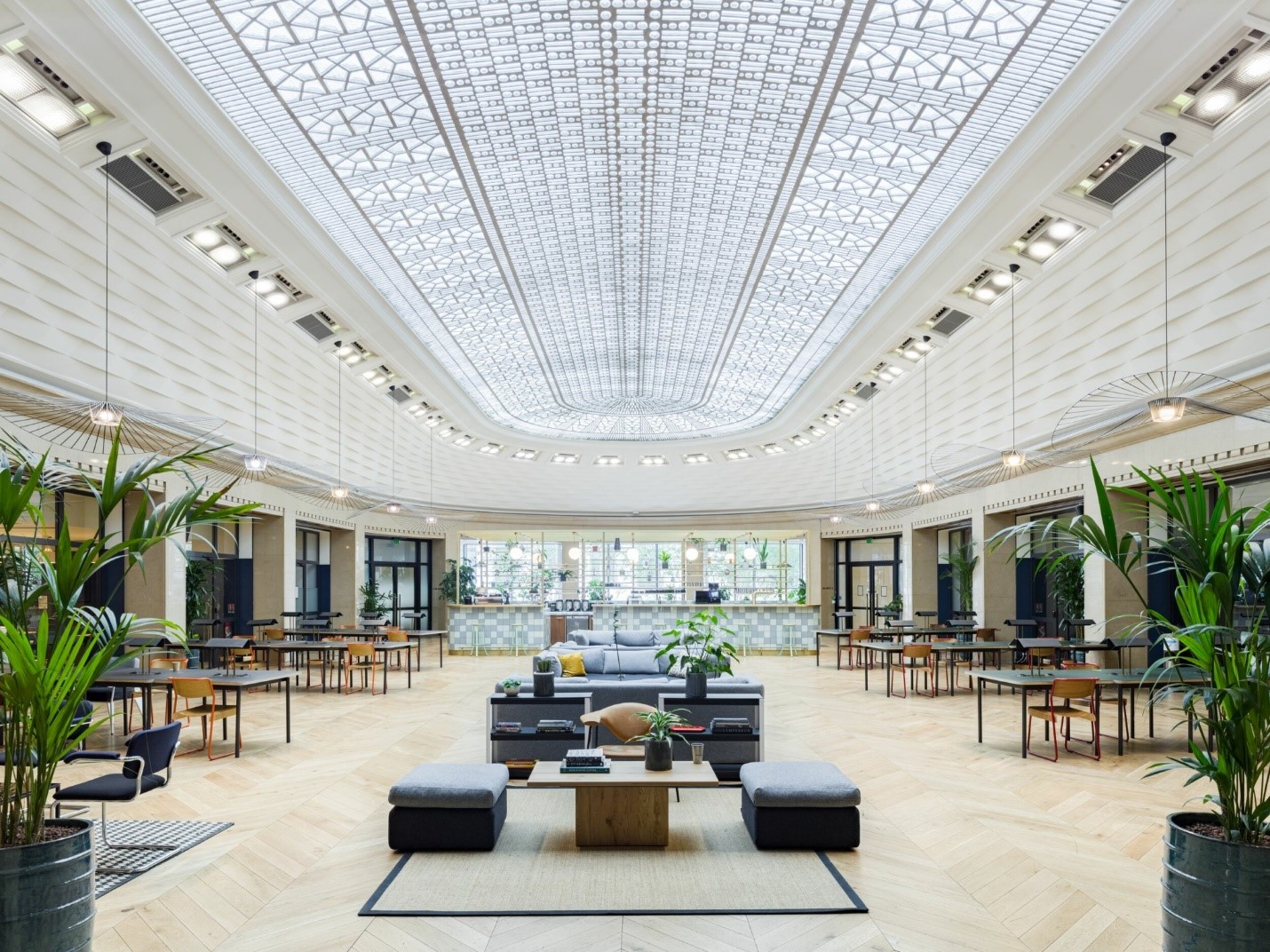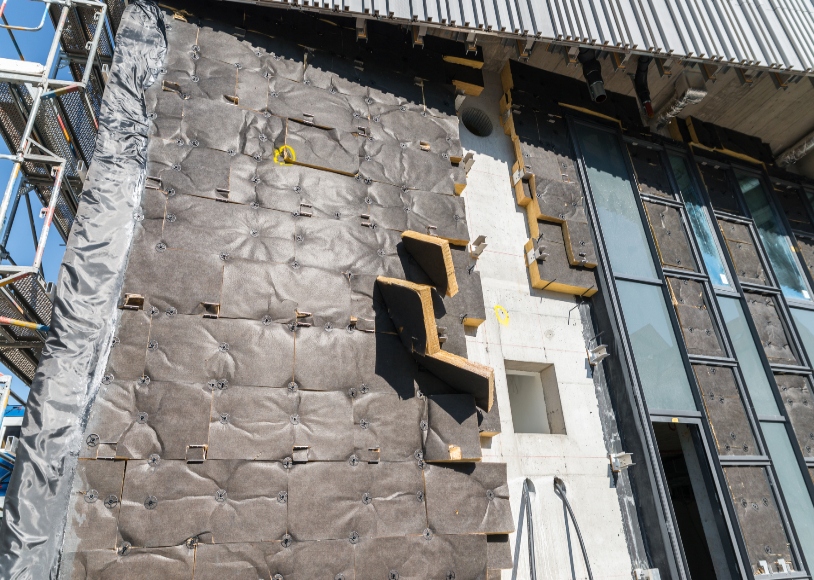What does LEED stand for?
LEED stands for Leadership in Energy and Environmental Design. It’s a voluntary rating system devised by the U.S. Green Building Council (USGBC) in 1998 to score and certify the sustainability of new and planned buildings and their surroundings.
This globally adopted rating system evolves as greener and more energy-efficient building practices emerge, and as the environmental and social impacts of construction projects become better understood.
The current version of LEED is v4. It places a renewed focus on reducing energy demand during and after project completion, and considers how buildings and homes can benefit local communities and the planet as a whole.
LEED certification meaning
You might have noticed the round LEED plaque adorning the sides of certain buildings and wondered what it means. This plaque represents the building’s LEED certification, an accreditation awarded by the Green Business Certification Inc. (GBCI) to buildings that reach or exceed certain environmental requirements. Many different kinds of buildings can earn LEED certification, from commercial spaces and schools to shopping malls and homes.
Broadly speaking, buildings with LEED certification are energy-efficient in their design. But because the GBCI rates buildings that use a complex and goal-oriented credit system, buildings can be awarded certification by pursuing any number of a wide variety of sustainability objectives.
For example, a LEED-certified building can earn points by being designed to avoid excessive water usage. It could be constructed from responsibly sourced materials, or situated near existing street networks and public transport to reduce reliance on cars. LEED certification encourages construction projects that are well integrated into the surrounding ecosystem or that take steps to preserve local wildlife and biodiversity.
The LEED scoring system is used not only to promote the basic comforts of a building’s occupants, but also to encourage designers and architects to create buildings that mitigate specific risks that might otherwise be ignored or overlooked. A recent addition to the LEED rating system introduces a credit for reducing bird deaths around high-rise buildings by using bird-safe patterned glass and other design techniques.

Factors like these—and more obvious ones such as energy, water, light, waste, materials, location, and environmental impact—affect a building’s overall sustainability. Each is taken into account when scoring a building’s design.
LEED certification levels
The LEED certification point system starts at 40 and goes up to a maximum of 110, with four grades awarded based on a building’s overall sustainability. The more points a building earns, the higher the certification level achieved.
The four levels of LEED certification are:
- Certified: 40–49 points earned
- Silver Certification: 50–59 points earned
- Gold Certification: 60–79 points earned
- Platinum Certification: 80+ points earned
LEED point system
To earn any kind of LEED certification, a building’s planning stage must first meet the prerequisite conditions for its particular building type. These are a set of baseline requirements that all buildings must adhere to before certification can even begin.
Once the prerequisites have been met, a building’s designer can choose which credits they want to aim for and the LEED certification level they want to target. There are hundreds of potential credits spread across nine impact categories, which the USGBC collates in its online LEED credit library.
The LEED credit categories are:
- Integrative Process
- Location and Transportation
- Sustainable Sites
- Water Efficiency
- Energy and Atmosphere
- Materials and Resources
- Indoor Environmental Quality
- Innovation
- Regional Priority
These credits are converted into points, with some credits more valuable than others. For example, under the Location and Transportation category, a building could earn a credit for having bicycle facilities within 200 feet of the main entrance (one point); a credit for installing electric vehicle charging stations in at least 5 percent of parking spaces (one point); and a credit for its proximity to public transit (up to six points depending on service frequency).
Why is it important to get LEED certification?
Apart from the obvious benefits of designing buildings in ways that are sustainable and that minimize the impact of the built environment on the natural world, LEED certification is heralded as a badge of honor for most organizations.
A LEED plaque on display is not just proof of having constructed an energy-efficient and eco-conscious headquarters. LEED certification indicates a company’s broader attitude toward environmental, social, and governance concerns. As sustainability becomes a bigger priority for workers, investors, and employers, being seen as green gives companies an advantage when it comes to hiring new talent, increasing brand awareness, and driving investment.
How can you get LEED certified?
- Choose a rating system that’s appropriate for your building. These include specific rating systems for projects such as schools, retail, data centers, warehouses, and more.
- Check the minimum program requirements to ensure your building is eligible for LEED certification. Without these prerequisites, it’s impossible to fulfill credits and earn the points needed for certification.
- Make sure your rating system is open. Different rating systems and LEED versions have different deadlines for registration and certification, which change throughout the year. USGBC posts a full set of deadlines online.
- Register your building using the LEED Online form, then make your application for certification by following the USGBC guidance for your project type.

